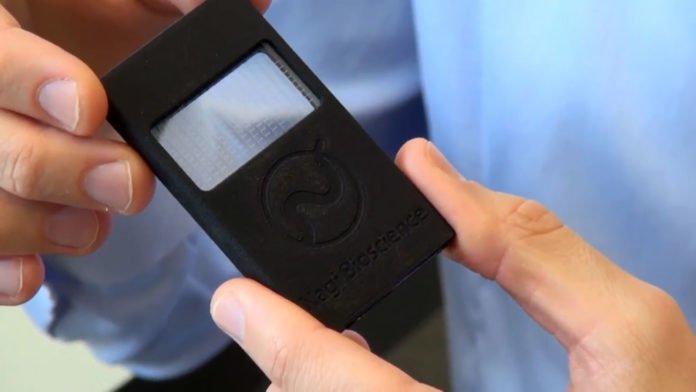The idea of using worms instead of mice in a wide array of pharmaceutical and toxicological tests is nothing new. But the tedious task of growing these tiny nematodes and the time-consuming process of analyzing them have made this an unlikely alternative for systematic use on an industrial scale.
In an effort to improve drug, cosmetic and other chemical product tests, EPFL spin-off Nagi Bioscience has created a device that automatically grows, feeds, houses and analyzes laboratory worms. It automates the process of growing and testing them.
The adult worms are not much more than a millimeter long. In order to observe them, they are placed individually into 128 tiny compartments on a tray. A defined concentration of nutrients or molecules to be tested is delivered to each compartment through microfluidic channels. The device comes with a software program for the researcher to plan out the experiment.
Laurent Mouchiroud, the startup’s co-founder and a life sciences researcher said, “By automating this process, we have reduced the time it takes to grow worms from several hours per day throughout the experiment to around 30 minutes on the first day.”
Pénélope Andreux, Senior Principal Scientist at Amazentis said, “This case makes it possible to sift very quickly a larger number of potentially usable molecules for a treatment, and this directly in a whole organism.”
Robert Mader, in charge of toxicological studies at Debiopharm said, “The little nematode housing unit measures a number of parameters – such as growth, fertility, and mobility – constantly and simultaneously. This could allow us to identify specific toxicity mechanisms in the early stages of development by comparing the changes caused by test compounds with those of compounds with known toxicity.”
“The objective is to select the molecule with the fewest side effects on humans for clinical testing. In addition to ethics, this device can also save researchers money, since just very small amounts of a substance are required in order to be tested on a worm. When we are looking for new molecules, sometimes only a couple of milligrams of a substance are available.”
Scientists additionally noted that the device has pushed laboratory mice to the tail end of traditional protocols governing pharmaceutical, cosmetic and toxicological testing, right before clinical trials on humans.
